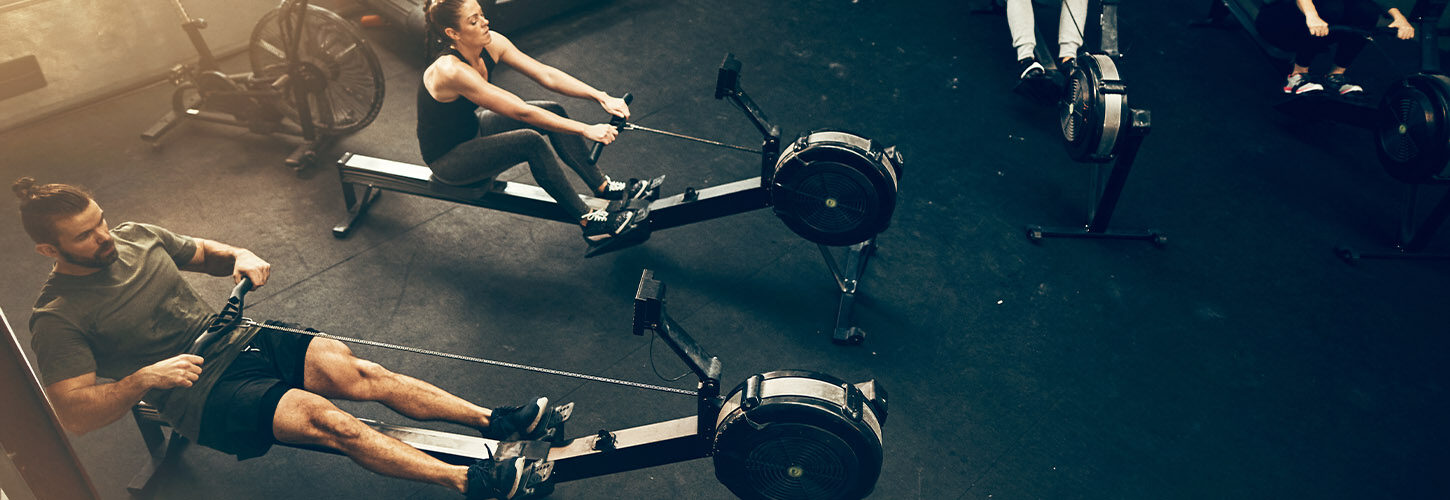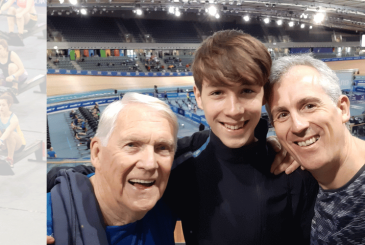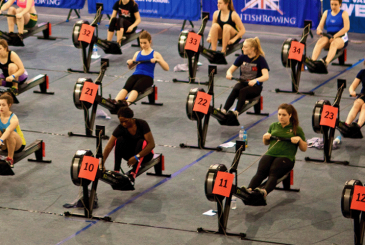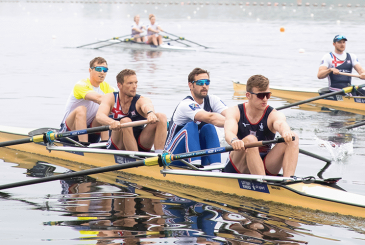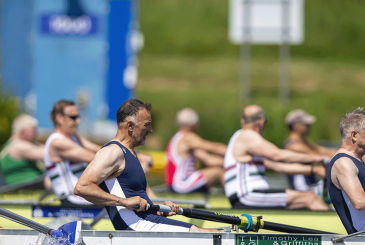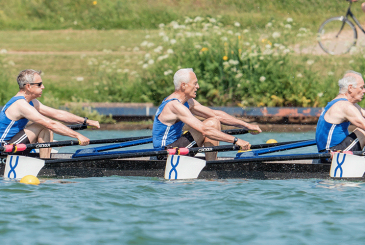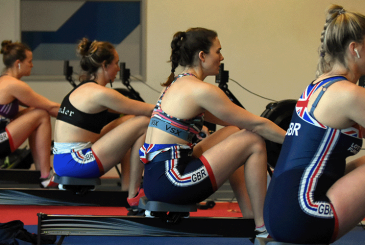Following on from Jack’s last article on aerobic training and building your engine, here he discusses the importance of developing your anaerobic capacity
Although training your aerobic engine is fundamental for indoor rowing, developing your ability to produce energy without oxygen is also important. This is because at the start of a 2,000m race, you require large amounts of power to accelerate the flywheel and attack the first 100 to 500m (depending on your tactics!) before settling into your mid-race rhythm. Importantly, the aerobic system is hampered in its ability to deliver large amounts of energy quickly, so energy demands at the start of a race are met predominantly via the anaerobic energy systems (see Baker et al. 2010 for an in-depth look at the three distinct, yet integrated energy systems). Similarly, towards the end of a race, which almost always involves an exhaustive sprint finish, anaerobic energy production again plays a significant role. Consequently, you should consider training that improves your ‘anaerobic capacity’ – a key part of your rowing programme weaponry that will help take your performances to the next level.
How do you develop your anaerobic capacity?
Your anaerobic capacity is limited, lasting approximately a couple of minutes during maximal intensity exercise. However, it is very trainable and you can target it via anaerobic training. As indicated previously, this form of training is different from aerobic work in that it shifts the emphasis towards exercise fuelled without oxygen. In practical terms, this means anaerobic training is more intense, but shorter in duration than aerobic training. Another important point to grasp is that anaerobic training can come in different forms.
Anaerobic adaptations… are more short term than aerobic adaptations…[so] you should incorporate more of this hard to very-hard training in the weeks leading up to your race
Training to incorporate into your programme
Read on for some example anaerobic training sessions:
- 4 x 8 min @ 24-28 with 8 min rest – In this type of session, which can be considered as intermittent, hard-intensity training, your aerobic system will, of course, play an important role in producing energy during the relatively long intervals. However, your anaerobic glycolytic system will also be called upon due to the effort levels required. Adaptations of such a training session are numerous, but include an improved ability to convert lactate acid (a by-product of anaerobic metabolism) into a fuel source. Ultimately, these types of training sessions will improve your anaerobic threshold – the point during exercise when your body must switch from aerobic to anaerobic energy production.
- 12 x 500m @ r22-34 with 1 min rest – This type of session can be considered as intermittent, very hard intensity training. Again, your anaerobic glycolytic system will be a key player leading to significantly elevated levels of lactic acid, which subsequently breaks down into lactate and hydrogen ions. This in turn, will improve your body’s ability to combat acidic conditions in the muscle (linked with fatigue and physical discomfort). Another benefit of this type of training session is that it will allow you to sharpen your technique at high rates. If you prefer, you can do less 500m repetitions to begin with and increase the number each time you repeat the session.
- 8 x 100m power strokes @ max effort with 4 min rest – This type of session, which can be considered as intermittent, maximal intensity training, is designed to stimulate neuromuscular adaptations, such as an increase in the activation of muscle fibres. The relatively long recovery periods are required to ensure the replenishment of muscle creatine phosphate, which will primarily fuel your efforts via the phosphagen energy system. You can treat this session like practice race starts. You can also use it as a test to repeat over time, monitoring how your hard work in the gym is translating to raw power on the rowing machine!
When should you do anaerobic training?
The answer to this question very much depends on the type of anaerobic training you are talking about.
Sessions such as the 4 x 8 min can be performed on a weekly basis alongside your low-intensity, steady-state training. However, more intense sessions such as the 12 x 500m and 8 x 100m power strokes should be incorporated into the weeks building up to your race, rather than many months before. There are several reasons for this.
Firstly, the anaerobic adaptations stimulated by the above training sessions are more short term in nature than aerobic adaptations (discussed in my previous article). In fact, research on endurance cyclists shows it can take just four weeks of high-intensity sprint training to induce neuromuscular adaptations (Creer et al. 2004).
Secondly, the anaerobic adaptations triggered are actually harder to hold on to over a prolonged period of time. So, it could be argued why seek them early on in your preparation, when you are likely prioritising building your aerobic engine?
Another crucial factor is that, although these hard training sessions unlock desirable physiological adaptations, they are associated with an increased risk of excessive fatigue, injury, and illness. Taken together, the key message here is that you should incorporate more of this hard to very-hard anaerobic training in the weeks leading up to your race. This practice is certainly reflected in the training habits of rowers. For example, research on elite junior rowers demonstrated that as the season progressed towards a national championship regatta, anaerobic training became more intensive (Guellich et al., 2009).
Some considerations
In the lead-up to your 2,000m race, training specificity is particularly important, so you should perform the above training sessions on the rowing machine where possible (although they can transfer well to other modalities e.g. 4 x 8 min on a bike is still a very effective session).
Furthermore, anaerobic training is meant to be hard, so some common sense applies: you should do a thorough warm-up prior to starting any of the above sessions. You should also plan recovery or rest days around these training sessions to encourage physiological adaptations.
In addition, resist the temptation to perform this type of training all the time. Like many of the rowers that I work with, who perform two to three anaerobic training sessions per week, try approaching your training with the view that you only have a finite number of hard strokes you can pull each week.
References
- Baker, J.S et al. Interaction among skeletal muscle metabolic energy systems during intense exercise. J Nutr Metab. 2010;905612.
- Creer, A.R et al. Neural, metabolic, and performance adaptations to four weeks of high intensity sprint-interval training in trained cyclists. Int J Sports Med. 2004;25(2):92-98.
- Guellich, A et al. Training methods and intensity distribution of young world class rowers. Int J Sports Physiol Perform. 2009;4(4):448-60.


